The Amish Dinner Table
How do Amish families eat? I want to thank reader Lattice for sharing her experience eating with Amish friends, in response to Slightly-handled-Order-Man’s question (“how do Amish families serve their food on a day-to-day basis?). I am reposting Lattice’s comments here with a few of my own thoughts:
I would be happy to tell you how it goes with my Amish friends. There is a silent prayer before and after the meal. Once everyone gets seated, everyone quiets, then all bow heads until you hear the man/father clear the throat or make some kind of noise or something, or on occasion say, “Amen.”
The food is all placed on the table, including an extra pitcher of water. Only in a very rare circumstance have I seen anyone get up from the table during the meal (I remember an older daughter getting up to get salad dressing once, and that’s really the only time I can recall it – in probably seventy meals with several different families).
They sit down like this for all three meals. They don’t start till everyone is there. In the summer, dinner is the “largest” meal (meaning more substantial food like meats/casseroles) and during school days, supper is.
A couple of families use plates, but most I know use something like a flattened cereal bowl. You get what you want, and seconds, if available, but you never get more than you will eat. Everyone is expected to clean their plates (it’s kind of a noisy matter), even young children. Most children two years or under just sit in a lap and eat off a parent’s or older sibling’s plate.
Overall, I feel like they eat hurriedly. Usually, the men have to get back out to work, I guess. That is, unless a special guest is present with lots of interesting stories. The Amish love to hear good stories! Also, they tend to wait until everyone is finished with the meal before they pass dessert (which is already sitting on the table, too). An exception to this is if someone goes for seconds, then a parent might suggest passing the dessert. I always try really hard to not have them waiting on me to finish.
They also don’t offer napkins, which is hard for me to get used to. They typically have a “community” dampened rag, if needed, but most never seem to need it.
I read once that there’s a lot of burping going on at the Amish table, but I have never noticed that, really. In general, the Amish don’t try so hard to disguise noises related to bodily functions, but they’re never rude about it… however, they don’t apologize for it either!
I hope what I’ve told gives a pretty good picture of what it’s like.
I’m not sure which community Lattice is describing but I can see much of her description matching what I have experienced at various meals. I think some things are pretty universal to the Amish eating experience. You also have variations of how you do things in different homes just like you do in English ones. Faster eaters, longer talkers, different foods, the way you pray, for how long, etc.
Eating is something all cultures do and some do it in their own characteristic way. Perhaps the Amish style of eating gives clues into the culture.
An Amish friend shared a few comments on this topic I don’t think he’d mind me passing along. On tableside strategy: “when you sit down and eat you shut up and shovel it in.” On dining with a “slow-eating” English person: “we all know the Amish pray too long, eat too fast , and say whoops instead of excuse me. So take your time.” He’s being a little facetious, but that made me smile.
Curious for your thoughts or comments from your own eating experiences.


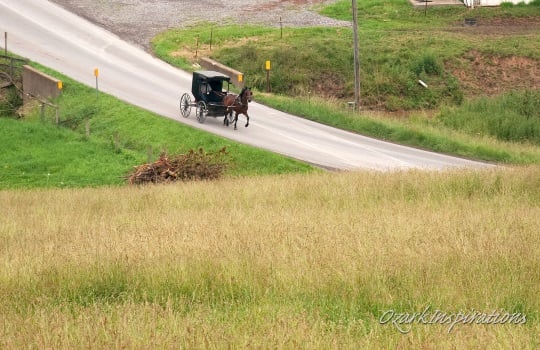
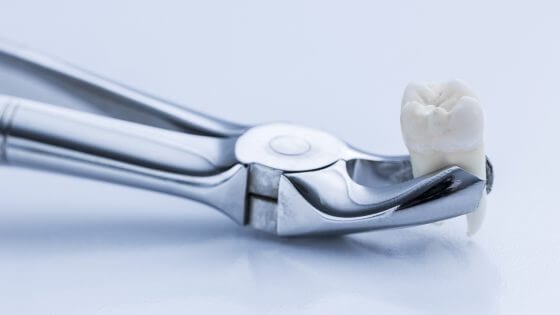
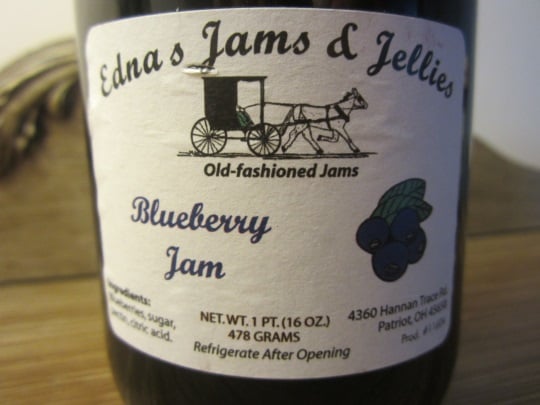
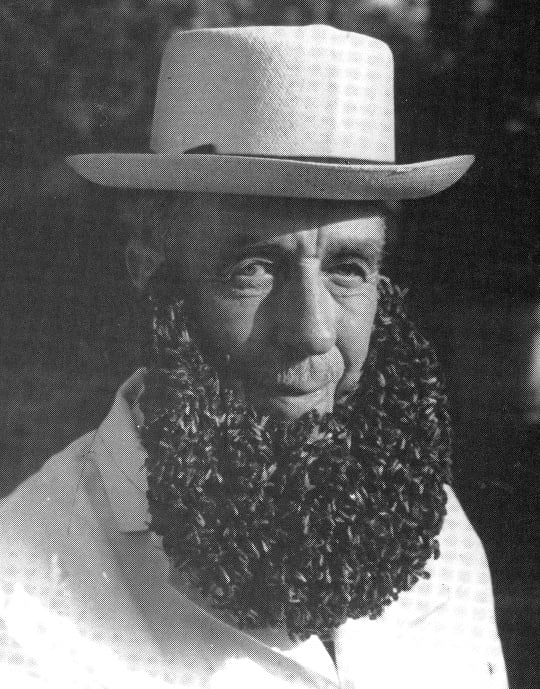

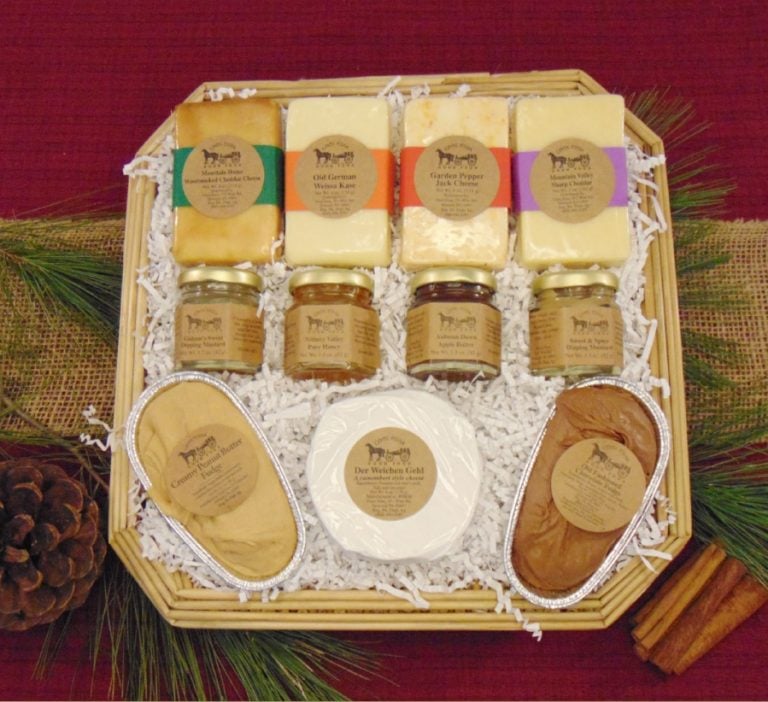
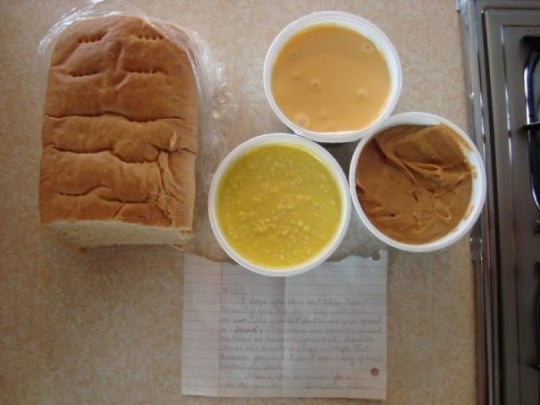
Very accurate lol! The scraping of the plates haas actually brought me to laughter. Thatt, and the sweet, thick peatut butter spread with pickles or meat on a sandwich. Kind of an odd combo!
I think for some people the dink-dink of silverware on near empty plates is like fingernails on a blackboard and I guess bad manners. Maybe I’m a caveman at the table but I never notice when I am doing it 🙂
Silent lunch
We recently had an Amish man who was doing some work on our house eat lunch with us. I was surprised at how silent he was. I was afraid we had made him uncomfortable, but I guess silence is normal. Makes me a little relieved.
I’ve had some pretty boisterous meals at the same time. I’ve also definitely been caught as the last one to finish (numerous times). Probably need to work more on eating and less on talking 😉
Just About Right
Lattice’s experiences match mine as well. I’m amazed at how clean my friends can get their dishes! Lots of scraping, even before adding seconds to the dish. And yes, no napkins, which is still strange for me (I must be a messy eater).
As visitors we are always expected to go first, something we’ve always felt funny about. The women work so hard to put on a nice meal and so it feels strange to go ahead of them in line. But this confirms their adherence to Jesus’ admonition that we should serve one another (Mark 9:35).
Regarding the prayer, I remember reading in The Amish Way (Kraybill, Nolt, Weaver-Zercher) that the Lord’s Prayer is an incredibly important part of each day for the Amish, that they often recite it three or more times every day. I tried reciting the prayer silently before dinner once and found that it ended at just the same time the man of the house breathed in, signaling the end of the dinner prayer. Works every time!
Keith as for the silent Lord’s Prayer, I’ve done the same. I’ve usually ended before the customary noise though. Fast English = fast prayer I guess!
I like your example about going first.
After eating I often try to help clean up the dishes. Not very manly in the Amish scheme of things, I know, but I’m probably more use there than behind a team. One of my friend’s wives used to try to stop me but now is apparently used to it and I think glad for the occasional “dish break”.
Next spring is the first time that my husband accompanies me to my amish “family”. After supper he usually cleanes up after me making a mess in the kitchen and also doing the dishes that don’t go into the dishwasher. I am sure that my amish “parents” will try to stop him, but I will stop them. Don’t want him to get spoiled and get funny ideas for after we returned home 😉
Thanks, Lattice, for your observations. Did they pass the toothpicks, too? It can be confusing if the noon meal is called either dinner or lunch, and the evening meal is called either dinner or supper.
Restaurants call it “family style” when bowls of food are passed around the table. It works better if the bowls are all passed the same way, usually to the left, so they don’t “collide.”
It seems in Pennsylvania they eat faster than other places. Sometimes I think that if people eat fast, they also tend to work fast and talk fast.
A Pennsylvania Dutch saying is “Allemol as an Schof blatt, verliert’s en Maulvoll.” Translated to English, it would be “Every time a sheep bleats it loses a mouthful.” This is sometimes given as a reminder to talkative children.
After the meal is over, the dishwashers are of the two-legged variety.
As far as setting the table, and trying to remember where the fork goes, a non-Amish person penned a poem, including a napkin. I thought the poem also said which way to turn the sharp side of the knife, but this one doesn’t.
A POETICAL SETTING
“Spread the cover. Count each face.
Lay a plate to mark each place.
At right the knife and spoons we lay,
On left the fork and napkin gay.
At tip of knife place glass for water
And left a plate for bread and butter.
Where Mother sits, the tea things go,
Cream, sugar, teapot, cups you know.
In front of Father’s plate so neat.
Lay knife and fork to serve the meat.
The other dishes coming soon
Need each a shining tablespoon.
A plate for bread, the staff of life
And one for butter, butter knife.
Some salt and pepper, don’t forget
And now the supper table’s set.”
Eunice Breakstone.
Huh! Interesting! I don’t know how well I’d fare at an Amish meal without a napkin! I’m a little surprised they don’t use them (or is this another “local” custom?).
As for the “bodily noises”, I’d constantly be “excusing” myself (do the Amish consider saying “pardon me”, “excuse me” an annoying “English” habit?). I get the impression that they are a kind, unobtrusive people who try hard to make guests feel welcome, so these things surprise me. As far as shoveling down food goes, my digestive system would rebel! (All that work to make delicious food, only to have people scarf it down like hungry hounds…tsk! Tsk!) I guess it’s best if I decline Amish meal invitations, huh? 😉
Linda, thanks for including that charming little poem! It’s a keeper that I’d like to memorize and pass along someday (useful, too!).
Alice Mary
Mark's suppers
I asked Mark about his experiences at Amish meals. I read the above posting. He agreed with it. He said when he first was invited to an Amish home for a meal he was just astounded at how they clean their plates. Every drop of sauce, gravy, salad dressing or whatever is scraped up. Nothing is wasted. Mark said that every home has those melamine soup bowls. Those and clear plastic water tumblers.
Mark often has youth boys come over for supper. I think some are coming tonight, actually. Something Mark finally had to make clear. “I fixed the supper. Your mom and sisters aren’t here. I’m not married. Get off your behinds and help me wash the dishes!”
That’s something I’ve noticed, myself, about Amish boys and men. When Mark would bring one of them down to visit me during the winter in Florida. They would use things and just leave them lay. Outside or inside they’d just leave things laying around. I told Mark, “These boys are used to having a mom or sisters picking up after them aren’t they?” Mark had to agree with me.
Does anyone know the reason they don’t use napkins ? Erik you should know this…..think I would take my own 🙂 gotta have a napkin when you eat…and I’m NOT about to share a community rag……what is their reason for not using napkins ????? Is this for all the Amish, or just certain ones ????
I know one of the authors that writes Amish books, visits the Amish a lot and I think even spends the nite with them….can’t think of her name right now, if I do, maybe I will email her and ask…..
I would not be a good guest at an Amish table 🙂 I like to eat slow and talk and enjoy my meal and the people I’m eating with….always good conversation when you eat…..
And burping at the table and not excusing yourself is disgusting and if you do the other,(and I think you know what I’m talking about !!!!!) that would be really RUDE……and I would probably just get up and leave the table…….are you sure all this goes on at the table where people are eating ????? So strange……just sayin……………..
Amish table manners
I wanted to say I don’t think the image of a family of Amish burping the meal away is quite the right one. Perhaps we could say they are less prudish about it if it happens.
Again–not all families though. I have been in some homes where a burp would seem pretty out of place. And I really haven’t heard it happen that often. Maybe people are just being more polite with English at the table. Lattice’s friends might be more at ease around her.
Beyond the Amish I have heard burping is a custom in some other countries…parts of Asia maybe?
I have no idea why napkins maybe aren’t as common on Amish tables beyond plain custom.
Napkins and community rag
@ Kentucky Lady 717….I grew up on an Amish farm in the 60’s and 70’s and we ate our meals pretty much as described above. We never used napkins pretty much because they were thought unnecessary. They are allowed if one wants to use them, these days they are used more especially if you have company. As for a “community rag” I have never heard of such a thing, children are encouraged to eat neatly and not make a mess and are usually spoon fed until they can handle a spoon quite well, hence the 2yr old on mom’s lap, she spoon feeds from her plate. Once they eat on their own they have their own place at the table. After the meal little ones are encouraged to wash their hands and face in case of any stickiness.
As for bodily noises that certainly would not have been allowed at our table and if one would have accidently slipped out I would surely have had to endured endless teasing from my older siblings. Of course my family was mostly girls, maybe where there’s more boys this happens more, but this seems to be the case everywhere, not just among the Amish. For some reason boys find that to be very funny.
The plates we used we called “soup plates” and were kind of a flat granite bowl with about a 1″ rim. They’re smaller then a dinner plate. Dinner plates are only used at Christmas and other special occasions. Not because it’s not allowed but because dinner plates were pretty china and soup plates were unbreakable.
table manners
Well, I talked to my son, Mark, about Amish table manners. He said that he’s never been to an Amish meal with a family where everybody is just belching and passing gas. He was at an Amish home where a teenage son passed gas at the table and then earned the privilege of washing and drying the dishes after supper. Mark said that when he has youth boys over to his house it’s a different matter. Something about teenage boys and bodily functions, I just don’t know. Was I like that 75 years agO? I can’t believe it. Mark says he always warns the boys, “Please! There are open flames above us!!”
He has also threated to send any culprits out to eat their supper in the chicken house AFTER he has evacuated the chickens!
But, Mark said back when he was teaching school and went to outdoor education school for an overnight with the English sixth grade boys. You could take an innocent little sixth grade boy who had never been away from home in his life. Put him in a cabin with fourteen other sixth grade boys and invariably the flatulance and laughing starts. Mark said he thinks it must be in the male genetic makeup.
Burps at the table
I think Mark has the insight here. And your second line cracked me up Don. That sounds like a nightmare dinner with the Grossfus family. Definitely not what people have in mind when they go for an Amish meal.
Just thinking of two families I know, I have heard burps on a few occasions at a farm friend’s home, with the only acknowledgement maybe a smile. I can’t really imagine hearing the same from other friends, at least not without some embarrassment. It may be a question of “country Amish” and “city slicker Amish” as I’ve heard it put.
Oh my gosh, Don! I have to agree with Erik about your second line. It cracked me up so thoroughly! I haven’t laughed that hard in days…weeks, maybe!
I also have to agree with what Mark said about the “male genetic makeup”. I come from a family of 3 girls, and when our male cousins used to come over for a visit, when we were kids, we were appalled at their antics and what they got away with (when grown-ups weren’t watching).
I sure needed that laugh today! (And I really do appreciate hearing Mark’s take on all of this!)
Alice Mary
napkins
I almost forgot. I asked Mark about napkins. He said in most Amish homes napkins are available on request. He said he usually asks for one. Somebody always scurries for one embarassed that there are none out. I must admit, maybe I’m revealing my wife and I and our family as heathens, but we never had napkins at the table either. Maybe when we had company. We just never did on a daily basis. I can’t even remember what we did. I think we just used the dish cloth. What kind of peasants were we?
Erik, you mentioned in Lattice’s re-post that the man of the house will clear his throat or make some noise to indicate he is about to pray. Is there any way to tell what some of these sounds, or clearing one’s throat means? I’ve always assumed it means to get someone’s attention, but I’m wondering if it could have a deeper meaning within Amish culture?
Apparently the Beachy Amish are more “liberal” in the sense that many host families use paper napkins for meals, although some families make use of individual cloth napkins. Some of the older men also have an interesting tradition if the silverware and napkins are not on the table and the meal is “buffet-style”, they will grab all the utensils, wrap them up in their napkin, and place them in their shirt pocket so their hands will be free to carry their plate through the buffet line.
Joshua I don’t think there is any deeper meaning to that beyond being a subtle indication that prayer has ended. It’s just less abrupt and crude than “okay stop praying now” or some other spoken equivalent.
I sometimes have to ask for a napkin at Amish homes too, they are usually dug up out of a drawer somewhere. I feel like I am being a pain but maybe I’m just a messier eater than most.
Funny Dinner Experience.
We were invited to have dinner with some of our Amish friends a few years ago. Before the meal our Amish friend said “ let’s pray”. After a few minutes he cleared his throat to indicate the prayer was over. Our Southern Baptist granddaughter looked up and sai “I didn’t hear anything”. I wasn’t sure how to respond but our Amish friend burst into laughter so we joined in the laughter as well. Each year when we visit them we talk about that funny meal we had.
I saw a man do that with his utensils and napkin once at a buffet dinner. That is now my standard practice.
Wow! It’s weird, and kind of nerve wrecking, to read comments about something I posted yesterday! Well, it’s an honor, too. Thanks, Erik:)
I did want to clarify something. Some seem to have the idea that I said there’s a lot of burping going on at the Amish table, and if you go back and reread, I actually said the opposite – I’ve never noticed much burping at the table; However, it has been my experience that those things (burping or otherwise passing gas)aren’t really “suppressed” when away from the table, like they are in society.
I don’t know why napkins aren’t offered. Maybe paper ones seem wasteful and cloth ones have to be washed, wrung, and hung to dry.
My favorite thing about the Amish table is how it continues to grow. Whether from a growing family or a number of guests, they go to great lengths to get everyone seated all together.
Maybe a good conclusion is that Amish are less prudish in general. Less time to worry about things like “excuse me’s”, “would you please pass…”, and napkins 🙂
The Amish meals I’ve had have been altogether pleasant experiences, just don’t expect to be doted on. Grab what you need and pass it on! Thanks again for this description Lattice.
Don Curtis, I too had to laugh hard at your second post. Thank Mark for us for sharing his experiences.
I’m betting in a few years when those youths marry up, their wives will be getting more helpful spouses than most. All the mamas will then be bringing their boys to Mark to get them civilized.
Erik, this thread certainly has turned out to be very entertaining as well as informative. Thanks!
We never had napkins and never felt the need for them. Between the first course and the desert, after the above mentioned scraping and scooping up the last pea we would wipe our plate with a corner of bread or if we didn’t have one saved we would say “shtickly brickly brot my dellaw”. In our family we didn’t say pass the bread or potatoes or whatever. Just “bread” “potatoes”, just the one word. Now if English people were present we children might have been too “shemich” to talk much.
Years later, going back with my french wife and daughter I learned all about the missing napkins and lack of manners; being fancy or “high”.
I’m just trying to imagine what a “flattened cereal bowl” looks like. Is it a common dish or is it from another era?
Re: flattened bowls
I am sorry that this link has such a long video (20 minutes) but when they tour the kitchen of this apartment they show bowls/plates that I imagine look like what’s being discussed here. Similar to white pie pans…..
https://www.youtube.com/watch?v=XYV0qATsyts&feature=g-all-u
Pasta bowls?
I have several Corelle PASTA bowls (which are like my Mom’s old soup bowls, and just as described in these posts). I’m pretty sure that’s what’s meant by “flattened bowls”. (I love them for soup, as you can cool it down faster, given the larger “surface area.”)
Alice Mary
Quick draw eating.
Oh my! I think my family must have been closet Amish. We could demolish a meal in 5 minutes flat and be back to our chores or lessons. There wasn’t much to wash off the plates either as everything was sopped up with bread.
Amish table manners
It sounds pretty much what I usually experience at an amish table.
Whenever I stay at my amish “families” house, my amish “dad” puts out napkins. I think amish usually don’t use napkins, because it is 1. unnecessary (usually grown ups don’t make a mess out of their faces while eating), 2. costly, 3. or add too much to the weekly laundry if not out of paper.
BUT…I have never ever sat down at an amish table for a meal that did not have a tablecloth on it. What puzzled me is that they don’t care about keeping the tablecloth clean. After the meal it is usually full of spots and stuff that fell off the serving spoons. They also put their breads on the cloth instead of on their plates and usually the buttery knife also leaves staines.
And when little kids are at the table you can actually throw the tablecloth into the laundry basket afterwards.
I never understood that and after a couple of days I told them that my grandmother always said that I had to pay 10 pennies to the washing lady if I made a spot on the tablecloth. In Germany (where I live)tablecloths are for the good looks of the table and you try not to make them filthy. They laughed….and they said that they also put it on to make the table look nice. And since then, my amish “dad” always leaves the cleanest place when he has finished his meal.
Another thing….I was startled about people not being polite at the table when asking for things like to pass the butter. They’d only say “budda” and reach out their hand instead of saying “James, would you please pass me the butter?”
Of course there are differences in every family and it was definately not meant to be rude…it is just like the simple farmers do….but since that day I only say “budda” with a big grin on my face.
Looking forward to my next trip in spring. We are invited to an amish wedding. Speaking about weddings…..the table cloth for the looooong tables at a wedding usually comes from a paper roll (white). As there are sometimes more people to sit all at once, they eat in turns (like at church). And with every seating they put on a new tablecloth, so that the next one would not have to sit at a filthy place.
Kind regards,
Anne
Manners
I enjoyed the comments and the little poem of table setting. Coming from a Mennonite background, I can see my parents set their table in this same way. We used regular plates but had to eat all we took, and dad always cleaned his plate clean with his last slice of bread. It wasn’t a meal without bread on the table.
It is neat to read these incidents and see how my background compared and seemed so similar, not realizing this is no doubt how my parents were raised as well!
Reading Amish America is a learing esperience…and most enjoyable!
Marilyn, glad to hear it, I have to say I get a good bit of interesting info here in the comments too.
Anne your post made me realize I need to be a bit more Amish at the table. I have started to grunt “milich” at the proper moments but still using too many “please pass’s” 🙂
I did not grow up Amish, but plain Mennonite. A few observations on table settings and Manners. The general quietness is a discipline to help younger children finish their meal and not cause the whole family to wait. Also, with large families, a lot of talking is a lot of noise.
Many of the families in our community had a paper napkin holder in the center of the table where they could be reached as necessary. Picture 10 people three times a day getting a napkin they might not need. That’s a pack of napkins a week, almost. In my own childhood, I’d get caught wiping my face on the table cloth or on my sleeve. Table clothes allow the mess of a meal with many children to be quickly cleared at the end of the meal and help protect the table finish from the wear and tear of so much use.